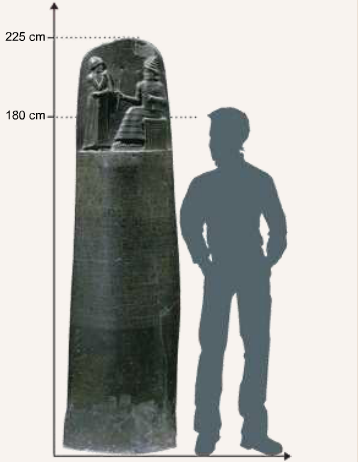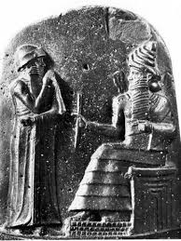Stele of Hammurabi
"The Law Code of Hammurabi is the emblem of the Mesopotamian civilization. This high basalt stele erected by the king of Babylon in the 18th century B.C.E is a work of art, history and literature, and the most complete legal compendium of Antiquity, dating back to earlier than the Biblical laws. Carried there by a prince from the neighboring country of Elam in Iran in the 12th century B.C.E the monument was exhibited on the Susa acropolis among other prestigious Mesopotamian masterpieces."
- The Louvre Museum
In 1158 B.C.E., Shutruk-Nahhunte I, king of Anshan and Susa, pillaged the art treasures of Mesopotamian civilizations and took them to his capital and modified the stele to fit with his culture. This explains why some text is carefully erased.



